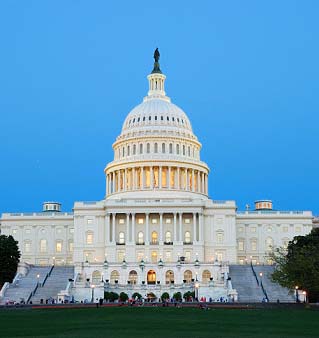 On April 10, President Obama released his delayed 2014 budget proposal, completing the initial phase of the federal budget process. In recent weeks, both House and Senate have passed vastly different budget resolutions, with each chamber heavily influenced by the respective majority. These varying budget resolutions set broad parameters for the more detailed appropriations processes occurring in both House and Senate over coming months. The White House budget proposal describes the President’s priorities and ideas for the spending and revenue targets in 2014. While largely symbolic, the President’s budget does signal areas of budget emphasis early in the negotiating process with Congress.
On April 10, President Obama released his delayed 2014 budget proposal, completing the initial phase of the federal budget process. In recent weeks, both House and Senate have passed vastly different budget resolutions, with each chamber heavily influenced by the respective majority. These varying budget resolutions set broad parameters for the more detailed appropriations processes occurring in both House and Senate over coming months. The White House budget proposal describes the President’s priorities and ideas for the spending and revenue targets in 2014. While largely symbolic, the President’s budget does signal areas of budget emphasis early in the negotiating process with Congress.
Education. In the proposal, education was an area of investment, with the President recommending $71.2 billion in discretionary funding for the U.S. Department of Education, a 4.6 percent increase over 2012 spending. The budget proposal focused on three major areas –expanded preschool education programs, consolidation and enhancement of STEM programs and additional hiring of STEM teachers, and addressing the problem of aging school infrastructure.
Higher education. In the area of higher education, the President’s budget includes $1 billion for a college affordability competitive grant program, styled on the Race to the Top initiatives used in recent years to encourage improvement and innovation in K12 schools. The most significant policy element in the area of student financial aid is his proposal to peg student loan interest rates to the market, rather than having them set by Congress. This echoes a Republican proposal issued earlier this week that would tie student loan interest rates to three points above the ten-year Treasury yield. Obama’s version provides less detail. While this would provide near-term relief on student loan interest rates, including the pending Stafford loan jump slated for July 1, some commentators are concerned about the implications when market rates begin to rise again. In the president’s budget, Pell grants would remain funded at the current maximum, $5,645.
Obama’s budget includes a new $300 million High School Redesign competitive grant program for districts that partner with colleges, businesses, and nonprofits to develop the work skills needed for emerging jobs. An increase of $150 million for the Federal WorkStudy Program is also included, which could double the number of participants over five years. Under the President’s budget, funding would be directed toward institutions’ demonstrated success in helping students from low-income families complete college. The budget would also expand programs to help students struggling with burdensome student loan debt.
R & D Funding. On the R & D funding side, the President also signaled a commitment to investment, proposing an overall 9 percent increase for non-defense R & D spending. The Department of Energy saw significant increases, as well as the National Science Foundation, U.S. Geological Survey and National Institute of Standards and Technology. For the National Institutes of Health, the President proposed $31 billion in finding for medical research, generally maintaining current spending levels.
As a member of New England Council, we publish the DC Shuttle each week featuring higher ed news from Washington. This edition is drawn from the Council’s Weekly Washington Report Higher Education Update, of April 15, 2013.
Founded in 1925, the New England Council is a nonpartisan alliance of businesses, academic and health institutions, and public and private organizations throughout New England formed to promote economic growth and a high quality of life in the New England region. The Council’s mission is to identify and support federal public policies and articulate the voice of its membership regionally and nationally on important issues facing New England. For more information, please visit: www.newenglandcouncil.com.
[ssba]
